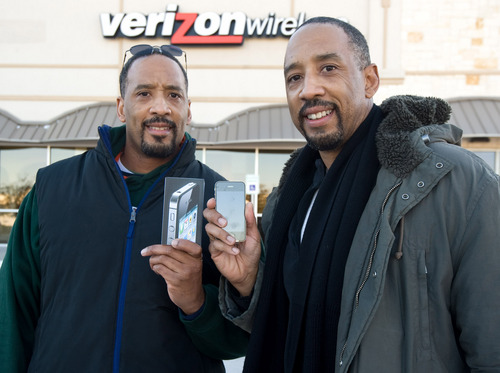Months back Verizon sent me a 4G personal hotspot to review and I confess it is one of the most important pieces of technology I have. For example just yesterday I was at a lunch meeting for an extended period of time – and I had an iPad and keyboard with me. The Optimum WiFi network was not working well. AT&T was also having problems for whatever reason – it was very slow. I cranked up the Verizon hotspot and was able to work at lightening speeds.
But as high profile as Verizon has been with the roll out of its 4G network it has also had record outages this past month. In fact some of my initial testing was disrupted by the outages – causing me productivity as I rebooted the card frequently thinking there was a hardware issue.
But it seems these challenges didn’t have a major impact on the company because Verizon just reported record revenue growth in the fourth quarter which was fueled not only by Wireless but FiOS and professional services.
Since Verizon Wireless has a reputation for having a great network it is likely the company shook off the outages and consumers and businesses determined this was a freak series of occurrences that likely won’t repeat. Verizon certainly has to be careful to not have any more outages in the foreseeable future as it depends on the superiority of its network in the minds of its customers to enable it to charge high prices for broadband and other access.
How great was wireless growth? Revenue for the company in Q4 was $18.3B up 13% YoY while data revenue was $6.3B up $19.2%. The company also boasted it had the largest number of net retail additions in three years – no doubt due not only to the iPhone but the slew of new devices the company has rolled out lately. But before we get to gadgets, the number of additions was 1.5M including 1.2M postpaid and the company now has 108.7M total connections and 92.2M retail customers.
The real strength here is in the retail postpaid data ARPU which is up a staggering 14.3%. The good news for the company is consumers are hooked on bandwidth-hungry applications such as streaming audio and video as well as Skype. As long as AT&T gives Verizon cover by raising prices, both companies will be able to charge on a metered basis meaning consumers will have to continue spending more on data.
And I can guarantee that most customers don’t realize that at 4G speeds you can hit your bandwidth caps much much faster than on 3G.
The company also introduced six new 4G LTE devices last quarter: the Droid Razr by Motorola; the Samsung Stratosphere; the HTC Rezound; the Galaxy Nexus by Samsung; and Droid Xyboard tablets in 10.1-inch and 8-inch varieties. Earlier this month, VZW further announced that six additional 4G LTE devices would be available soon, including two mobile hotspots, (the company now calls them Jetpacks) from ZTE and Novatel; three smartphones – the Droid 4 and Droid Razr Maxx from Motorola, and the Spectrum from LG, which launched last week; and the Samsung Galaxy Tab 7.7.
In its statement the company reminded us of its purchase of AWS licenses from SpecrumCo – a JV of Comcast, Time Warner, Bright House Networks and Cox TMI Wireless. This deal is subject to regulatory approval and my feeling is regulators will be very skeptical of the deal as it is essentially an asset purchase with a condition that each company won’t compete in each other’s markets. It seems highly anti-consumer to me.
The good news is 4G is booming, wireless device growth is staggering and competition – at least from device companies is very alive and well. Businesses and consumers for their part obviously place high value on 4G and wireless in general – how else do you explain the massive growth in connections as well as ARPU? All this in a depressed economy where the real unemployment and underemployment rate is said to be as high as 18%!
Imagine what the growth of Verizon will be in a healthier business climate.
One looming challenge of course is the strain on the 4G network. My testing of Verizon Wireless and the same is true for any wireless carrier shows speeds vary widely moment to moment. If you get enough Netflix subscribers to simultaneously watch TV in one area of the country you are going to kill the tower’s bandwidth and subsequently everyone suffers.
And this is in-part the reason the wireless companies have to be very careful with pricing – they need to ensure they can afford to upgrade their networks but also not make their pricing terms so onerous that they kill the golden ARPU-increasing egg laying goose.
To learn more about 4G wireless technologies be sure to attend the 4GWE Conference, collocated with TMC’s ITEXPO East 2012 taking place Jan. 31-Feb. 3 2012, in Miami, FL. Co-sponsored by TMC (News – Alert) where I am CEO.






